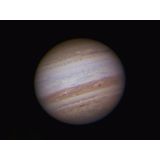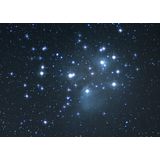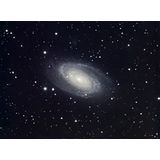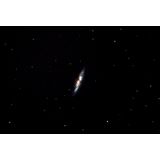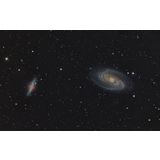
Clear February nights present some great stargazing opportunities. Be sure to bundle up and keep warm while you get outside for some stargazing fun!
Here are a few of Orion's top picks for February stargazing:
Lunar Pairing - On the evening of February 1st, the Moon will pass 0.3° south of bright star Spica in the constellation Virgo. You can enjoy this close pairing with unaided eyes, but you can also obtain a great view in binoculars or a small telescope.
New Moon Night - The dark skies presented by the New Moon on the evening of February 10th presents a great, albeit chilly, opportunity to get great views of deep space objects in larger telescopes.
Make the Most of Mercury - Speedy planet Mercury will be in its best observing position in the evening sky of February 16th, when it reaches its greatest elongation east. Look for the closest planet to the Sun to appear low in the southwestern sky (approximately 11° from a level horizon) about 30 minutes after the Sun goes down. Use binoculars to pick Mercury out of the sunset's glow.
Jupiter Shines Bright - The biggest planet in our solar system will be a splendid sight for stargazers throughout February. Look for gigantic Jupiter near the constellation Taurus in the western sky. Since Jupiter sets well after midnight throughout February, it will be a great planetary target for telescopes.
Great Binocular Cluster - Get out your 50mm or larger binoculars for a great sight of the Pleiades star cluster (M45), which will be high in the northwestern sky during February. You can see the Pleiades with unaided eyes, but the open star cluster is a spectacular sight in binoculars.
Orion Nebula - Around 9pm throughout February, almost due south and about halfway up from the horizon, our namesake constellation Orion will be in a great viewing position. Use binoculars or a telescope and look in the area below the three recognizable stars of Orion's belt for a great view of the striking Orion Nebula.
Winter Star Clusters - Look east of bright star Sirius with a telescope to see two beautiful star clusters, M46 and M47 in the constellation Puppis. For more great cluster observations in February, look in the constellation Auriga to go after glittering clusters M36, M37 & M38.
M35 in Gemini - Use a telescope and go after open star cluster M35 in Gemini, which will be high in eastern February evening skies. If you happen to be in an especially dark sky site, try to pick out its companion star clusters.
Bright Galaxies - In late February, the bright galaxies M81 & M82 will be about as high in the sky as they ever get for North American stargazers. Use a large telescope and chase these galaxies down just off the leading edge of the Big Dipper asterism. Many observers consider M81 & M82 the best pairing of visual galaxies in the sky!
All objects described above can easily be seen with the suggested equipment from a dark sky site, a viewing location some distance away from city lights where light pollution and when bright moonlight does not overpower the stars. All objects have been verified by actual observations by Orion Telescopes & Binoculars Staff at Fremont Peak State Park, and/or Deep Sky Ranch, 60 miles and 90 miles respectively from San Jose International Airport, San Jose, CA.




